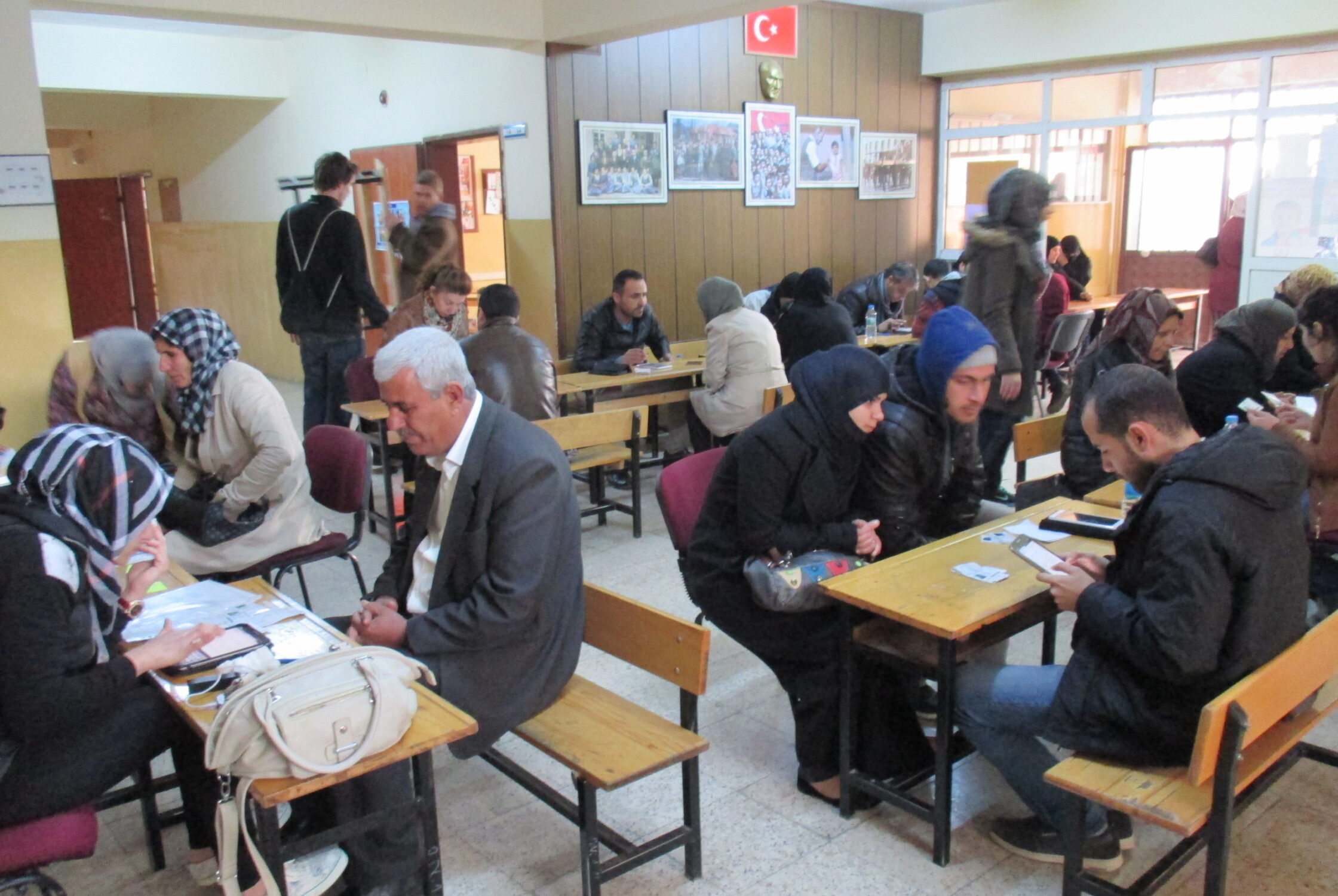World Refugee Day: Beyond the Numbers

World Refugee Day: a day to “recognize the lives of refugees and those who are dedicated to helping them.” So many of the people dedicated to helping refugees (and IDPs, asylum-seekers, and the stateless, all of whom are included in the purview of World Refugee Day) are refugees themselves. We normally think of international aid workers as the ones helping the displaced, but in places where access is difficult or dangerous, it’s often a case of refugees helping their own communities.
The numbers released in yesterday’s UNHCR Global Trends report are staggering. Global displacement has once again reached at all-time high, and all indications are that the numbers will only continue to increase. While the headlines may focus on these unprecedented figures, World Refugee Day is an apt time to remember that each number represents a group of human beings with individual lives, hopes and dreams. Each refugee has a personal history that is not only about the hardship of displacement and trauma, but also about acts of kindness and hope and even heroism.
Of the millions of people surviving day to day inside Syria, most of them are being helped by the commitment, generosity, and creativity of their own networks of reliable people. People who are already in danger often put themselves in even more danger to take care of family members, neighbors, and entire communities. While this only makes sense—humans in peril will struggle to survive, after all—it’s easy to forget.
Regarding Syria, you probably know the numbers: 4 million refugees, 7.5 million IDPs, 12 million people reliant on humanitarian aid, 3.5 billion USD in humanitarian assistance from the U.S. government. Few people expected the Syrian conflict to escalate the way it did or to last this long. Nowadays, few people dispute that it will go on for a lot longer and that humanitarian needs will only increase.
“Aid to Syrian refugees in the surrounding countries is progressing, but humanitarian assistance to those trapped inside Syria is less on track. The conflict is dynamic and access to those in need often cannot be assured from day to day.”
Aid to Syrian refugees in the surrounding countries is progressing, but humanitarian assistance to those trapped inside Syria is less on track. The conflict is dynamic and access to those in need often cannot be assured from day to day. The United Nations and the international non-governmental organizations (INGOs) that traditionally do much of the humanitarian work in such a crisis are having a difficult time operating in the country due to the enormous security risks and ongoing restrictions by the regime. In addition, funding shortfalls for aid agencies persist, and after more than four years, other crises are capturing the world’s attention and money. As more Syrians become vulnerable, humanitarians are still grappling with the question of how to increase the aid that makes it inside the country.
On RI’s most recent mission related to the Syria crisis, our team met with a series of local Syrian aid groups that were providing assistance inside the country, often by sheer force of will. As in so many humanitarian disasters worldwide, in Syria local communities and individuals began assisting others as soon as the crisis began. Syrians have been helping Syrians for years now, even when they have practically nothing—neither materials, nor supplies, nor money—to work with. They may not have the same visibility as the international aid groups, but these are the groups that are saving most of the lives every day. If they can do so much on their own, think how much more they could do with targeted support from donors and experienced aid groups.
The U.S. government has been working to help local Syrian groups develop their abilities to provide humanitarian assistance inside the country as effectively as possible, including offering trainings on topics from international humanitarian law to grant proposal writing to financial management. More recently, the Office of Foreign Disaster Assistance (OFDA) announced a $10 million fund to support local Syrian groups contributing to the humanitarian response inside Syria. This is an excellent initiative that is intended to work with some of the many local Syrian groups that are already doing so much of the essential, lifesaving work in their own communities.
Humanitarian supplies can still get into Syria—the harder part is finding responsible people to distribute and use them. The United Nations and the INGOs and their partners have been reaching out to local Syrian groups for this, and the work is happening. But so much more can and must be done. Humanitarians generally agree that equipping local groups to do aid work is one of the best practices in an operation, but it doesn’t usuallyhappen on a large scale. Now that we have so few other choices, Syria could be an important turning point to put the idea into practice.
On World Refugee Day, we remember that as often as not, those dedicated to helping refugees are also refugees. Each has their own unique story of how and why they found the courage to reach out to others. They are far more than numbers.